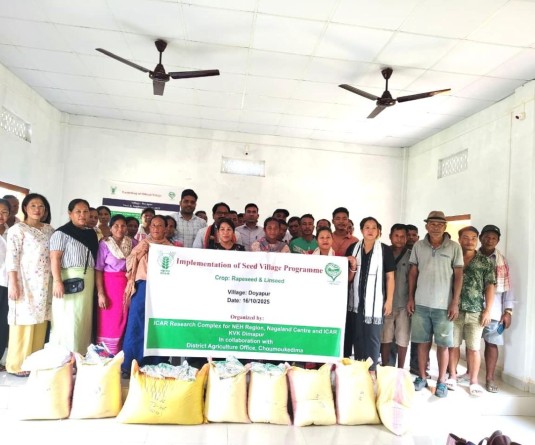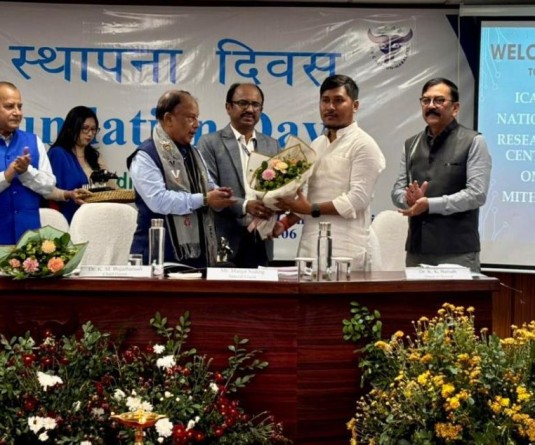
Dr T Esther Longkumer
CTO-Soil Science KVK Phek, ICAR-NRC on Mithun
Mulching is the process of covering the topsoil with plant material such as leaves, grass, twigs, crop residues and straw etc. In natural farming, the term mulching refers to the use of organic and biodegradable plant materials.
Advantages of mulching:
• Reduces Soil temperature
• Reduces crusting of soil
• Reduces surface evaporation
• Reduces weed emergence
• Reduces soil erosion
• Reduces crop failure as a result of drought
Types of mulching:
• Crop Residue Mulch: This comprises any dried vegetation, farm stubble. It is used to cover the soil against severe sunlight, cold, rain etc. Residue mulching also saves seeds from birds, insects, and animals.
• Live Mulch: Live mulching is practiced by developing multi-cropping/inter cropping patterns of monocotyledons and dicotyledons in the same field to provide all the essential nutrients. Monocots, like wheat and rice, supply nutrients such as potash, phosphate and sulphur, while dicots are capable of nitrogen-fixation in fields.
Criteria for selection of live mulching crops:
• If main crops have long root system, the intercrop used in live mulching should have short root system.
• Intercrops should be fast growing and should have life span of either one third or half to the main crops.
• Inter-crops should be shorter in height in comparison to the main crops which otherwise may affect the process of photosynthesis in main crops.






